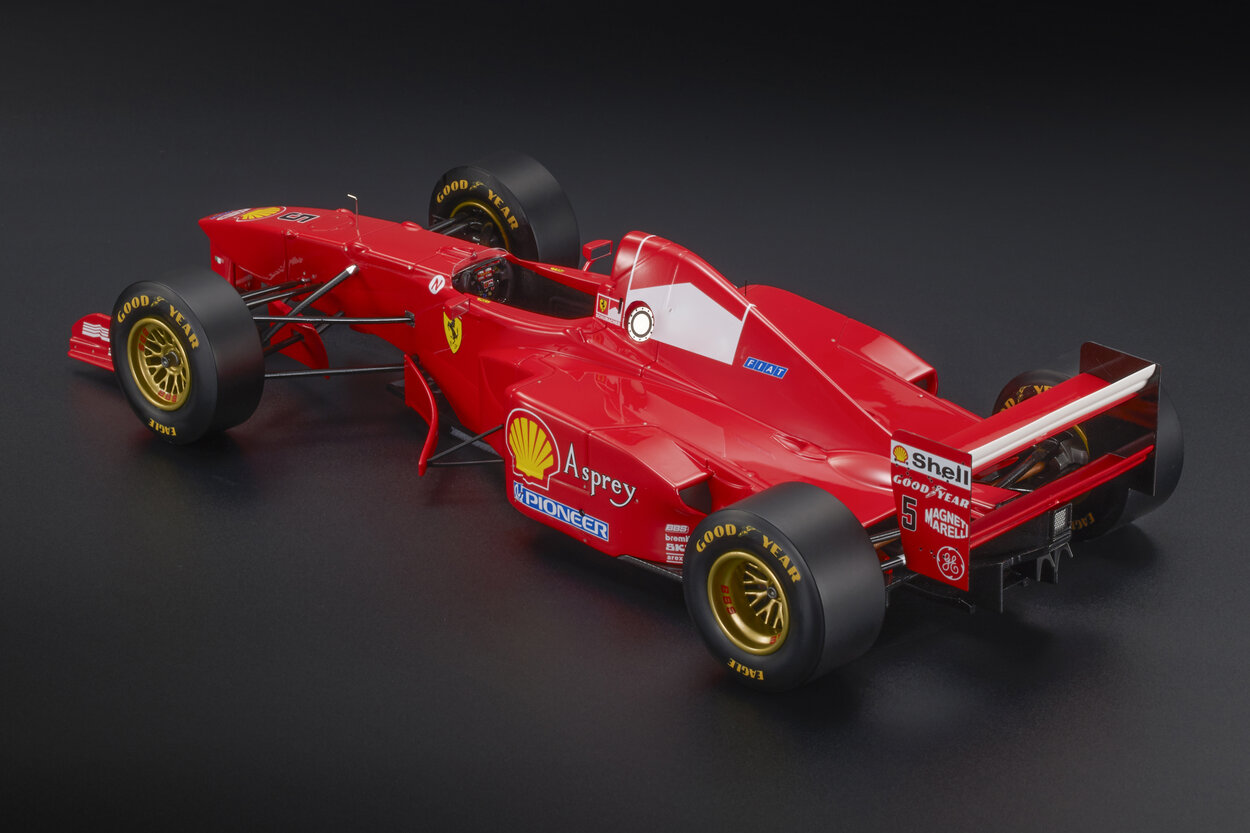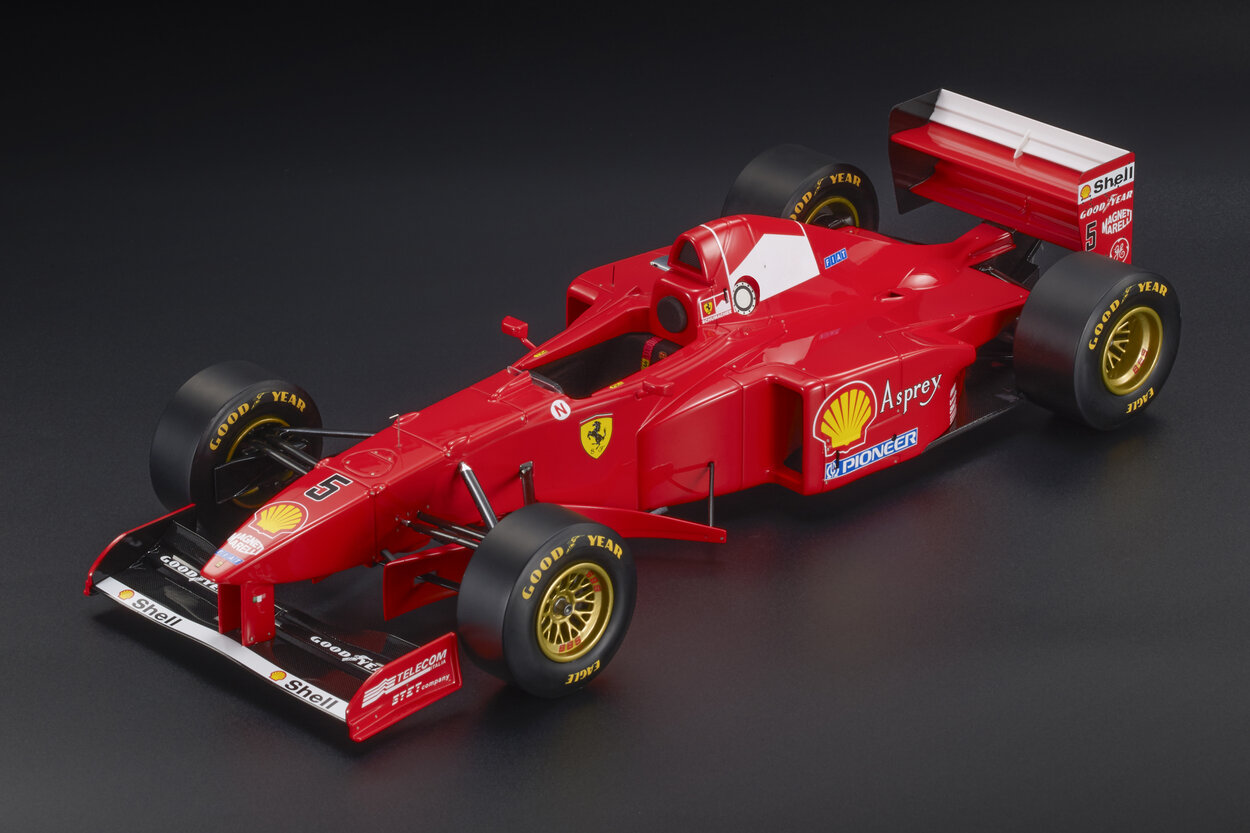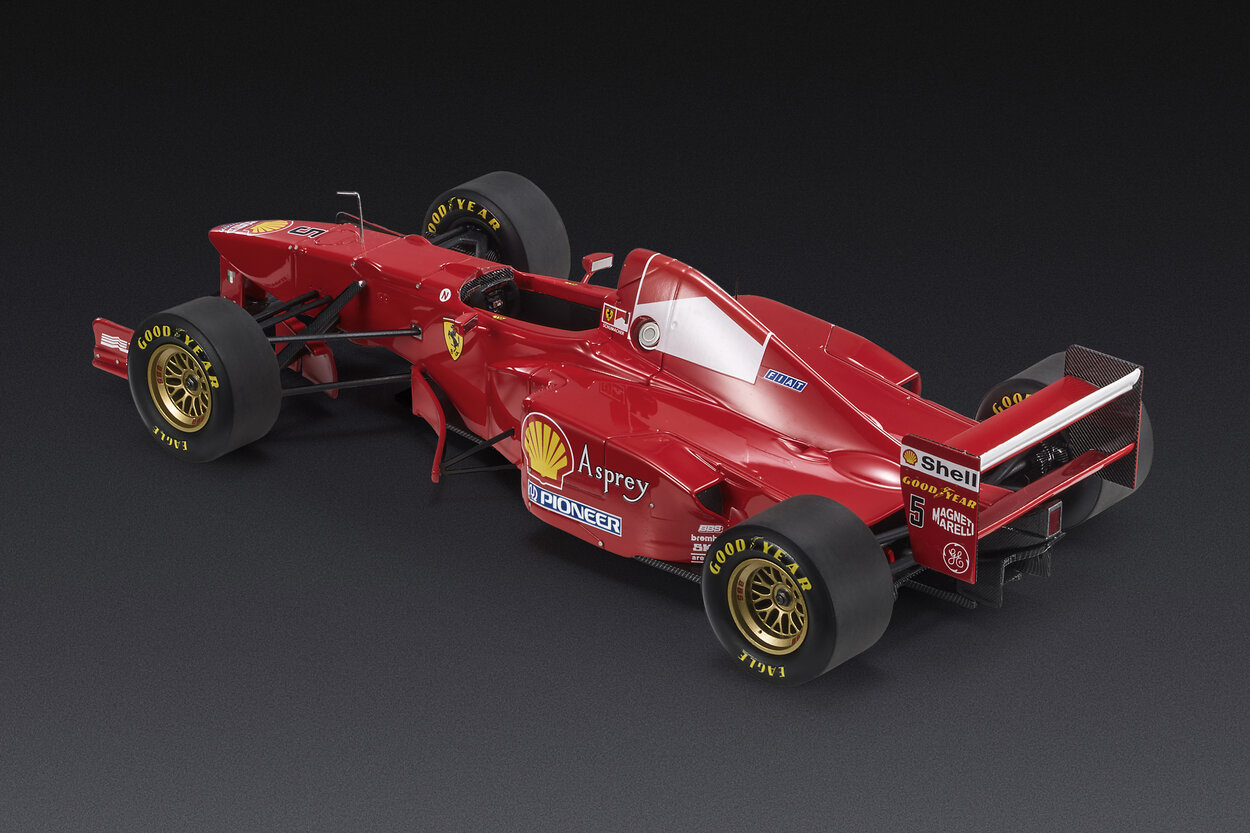Ferrari F310B
It is the last Ferrari designed by John Barnard and the first on which the South African engineer Rory Byrne works. With Barnard’s departure, Ross Brawn is elevated to head the technical direction of Ferrari, with whom Byrne had worked at Benetton, winning three world titles in two years with Michael Schumacher at the helm. The team, under the command of Jean Todt, which will revolutionize Formula 1 in the coming years, is effectively formed.
To overcome the numerous retirements of the 1996 season, Maranello focuses more on reliability than on performance per se. Apart from the slightly lighter red color tending towards orange, which was worked on together with the new and generous tobacco sponsor (Marlboro/Philip Morris), the most obvious novelties compared to the preceding car, of which it is a clear development, are all in terms of aerodynamics. The shapes of the F310 B are more squared, the cockpit slightly lowered, and the nose immediately raised, as had become customary from the previous year. In the second half of the season, the design of the air scoop is slightly modified.

Drivers:
Michael Schumacher: Michael Schumacher’s season is extraordinary and sees him in contention for the World Championship title until the sixteenth and final race. An ill-conceived attempt to prevent Jacques Villeneuve, his rival in the title fight, from overtaking him forces him to retire and triggers a storm of controversy. Up until that moment, Michael’s season had been impeccable: five victories in Monte Carlo, Barcelona, Montreal, Magny-Cours, and Spa, three second places in Melbourne, Imola, and Hockenheim, and still finishes in the points in the other races completed. Three times the fastest in qualifying and three times in the race. The second place achieved in the Drivers’ World Championship standings is nullified by the Federation due to the incident with Villeneuve.
Eddie Irvine: A very consistent season for Eddie, with a second place in Buenos Aires and four third places in Imola, Monte Carlo, Magny-Cours, and Suzuka. Like his teammate, he suffers from a drop in competitiveness of the F310B in the latter part of the season.
Our model cars:

The engine is the 10-cylinder V of 75° and three liters of displacement that debuted the previous season, for which Paolo Martinelli prepares a second version, with about twenty more horsepower, which debuts mid-season.
With Michael Schumacher behind the wheel, Ferrari returns to fight for the World Championship title. It hadn’t happened since the 1990 season. The F310B wins five out of the sixteen races it participates in. Three pole positions, three fastest laps in the race. The world championship dream fades only in the last race.


